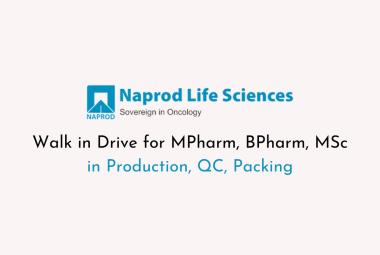About Authors: Shahin Shahida, Seema Kathait
Reference ID: PHARMATUTOR-ART-1082
Abstract
In this report, we explored the mechanisms underlying keratinocyte-specific and differentiation-specific gene expression in the skin. We have identified five keratinocyte-specific, open chromatin regions that exist within the 6 kb of 5' upstream regulatory sequence known to faithfully recapitulate the strong endogenous keratin 5 (K5) promoter and/or enhancer activity. One of these, DNase I-hypersensitive site (HSs) 4, was unique in that it acted independently to drive abundant and keratinocyte-specific reporter gene activity in culture and in transgenic mice, despite the fact that it was not essential for K5 enhancer activity. We have identified evolutionarily conserved regulatory elements and a number of their associated proteins that bind to this compact and complex enhancer element. The 125-bp 3' half of this element (referred to as 4.2) is by far the smallest known strong enhancer element possessing keratinocyte-specific activity in vivo. Interestingly, its activity is restricted to a subset of progeny of K5-expressing cells located within the sebaceous gland. The other half of HSs 4 (termed 4.1) possesses activity to suppress sebocyte-specific expression and induce expression in the channel (inner root sheath) cells surrounding the hair shaft. Our findings lead us to a view of keratinocyte gene expression which is determined by multiple regulatory modules, many of which contain AP-2 and/or Sp1/Sp3 binding sites for enhancing expression in skin epithelium, but which also harbor one or more unique sites for the binding of factors which determine specificity. Through mixing and matching of these modules, additional levels of specificity are obtained, indicating that both transcriptional repressors and activators govern the specificity.
Enhancers are composed of a modular arrangement of short conserved sequence motifs and that enhancer strength is correlated with the redundancy of these motifs.
Following are the several plants which are used as complex enhancer:
KESAR
Biological source: Obtained by dried stigma of Crocus sativus belonging to family Iridaceae.
Chemical constituent: Red colouring matter Crocin and Crocetin.
Uses: Used as colouring agent and flavouring agent. Also used as stimulant and antispasmodic.
MULETHI
Biological source: Obtained by dried and peeled root of Glycyrrhiza glebra belonging to family Fabaceae.
Chemical constituent: Glycyrrhizin (glycyric acid), Flavonoids, Carbenoxolone.
Uses: Used as demulcent, expectorant and flavouring agent.
HARDE
Biological source: Obtained by dried, ripe, matured fruit of Terminalia chibula belonging to family Cobretaceae.
Chemical constituent: Main chemical constituent is Chebulic acid. Another are moisture, Tannin, Chebulagic, Chibulinic, Ellagic and Gallic acid.
Uses: Used as astringent, laxative, stomachic and tonic. Also used in Triphla.
NOW YOU CAN ALSO PUBLISH YOUR ARTICLE ONLINE.
SUBMIT YOUR ARTICLE/PROJECT AT articles@pharmatutor.org
Subscribe to Pharmatutor Job Alerts by Email
VACH
Biological source: Obtained by dried rhizoms of Acorus calmus, belonging to familY Araceae.
Chemical constituent: Asorone,Acorine,Volatile oil, Starch, Resin, Tannin, Euginol.
Uses: Used as cosminative, bitter stimulent, vermifuge, perfumery, insect repellent,sedative.
PILI SARSON
Biological source: Obtained by dried seed of Brassica camprastis belonging to family Cruciferae.
Chemical constituent: Sinigrin, Allyl isothiocynate, Fixed oil, Protein, Volatile oil.
Uses: Used as counter irritent, rubifacient and condiment.
DHANIYA
Biological source: Obtained by dried ripe fruit of Coriandrum satvium belonging to family Umbilliferae.
Chemical constituent: Coriandrol, Fixed oil, Protein, Coriandryl acetate,, L-borenol, Geraniol and Pinene.
Uses: Used as stimulant, carminative, purgative and flavouring agent.
HALDI
Biological source: Obtained by fresh rhizome of Carcuma longa belonging to family Zingiberaceae.
Chemical constituent: Curcuminoids, Curcumin, Volatile oil and Resin.
Uses: Used in ointements and creams. Also used in antiinflammatory drugs.
ANAR
Biological source: Obtained by Punica granatum belonging to family Lythraceae.
Chemical constituent: Ellagic acid, Ellagitannins, Punicic acid,Flavanoids, Anthrocinidine, Anthocynanin, Estergenic, Flavanoids.
Uses: Use in skin disorder, used to tonning skin. Tretment of cancer, gum bleeds, expel tapewarm. Used as antioxident, antiinflammatory.
KHAE
Biological source: Obtained by Sesbania grand belonging to family Fabaceae.
Chemical constituent: Kaempferol-3-O-a-L-rhamnosyl (1®2) 3 - (a-L-rhamnosyl (1®6) - b - D - galactoside4 was isolated.
Uses: Used as antiseptic, antiinflammatory and antimicrobial. Used in the form of ointement, cure itching and various skin eruptions.
NAGAKESARA
Biological source: Obtained by Mesua ferrea belonging to family Gutiiferae.
Chemical constituent: Mesuol, Mesuaxanthofle B, Euxanthofle - 4 - alkyl coumnu 01 mammesisin, Octadecatriefolic and Hexadecanolic acid present in seed oil.
Uses: Useful in female patient suffring from vaginal mpnaliasis.
Resarch work going on: Antifungal activity. Antibacterial activity.
SAFED CHANDAN
Biological source: Obtained by dried bark of Sntalum album
Chemical constituent: Santeren, Santalol, Santilol and main constituent is Alpha sentilol.
Uses: used as natural medicine.
NEEM
Biological source: Obtained by dried bark of Azadirachta indica belonging to family Meliaceae.
Chemical constituent: main chemical constituents are Azadirachtin, Nmbin, Nimbolide, Nimbidin, Maliantriol, Salanin.
Uses: Used asinsecticide, nematicide, antimicrobial, spermicidal. Used as heart tonic and in hyper acidity.
MANGIESTHA
Biological source: Obtained by Rubiya cordifolia.
Chemical constituent: main constituent are Purpurin, Xanthopurpurin, Purpurroxanthin
Uses: Used as immunoregulator.
NOW YOU CAN ALSO PUBLISH YOUR ARTICLE ONLINE.
SUBMIT YOUR ARTICLE/PROJECT AT articles@pharmatutor.org









